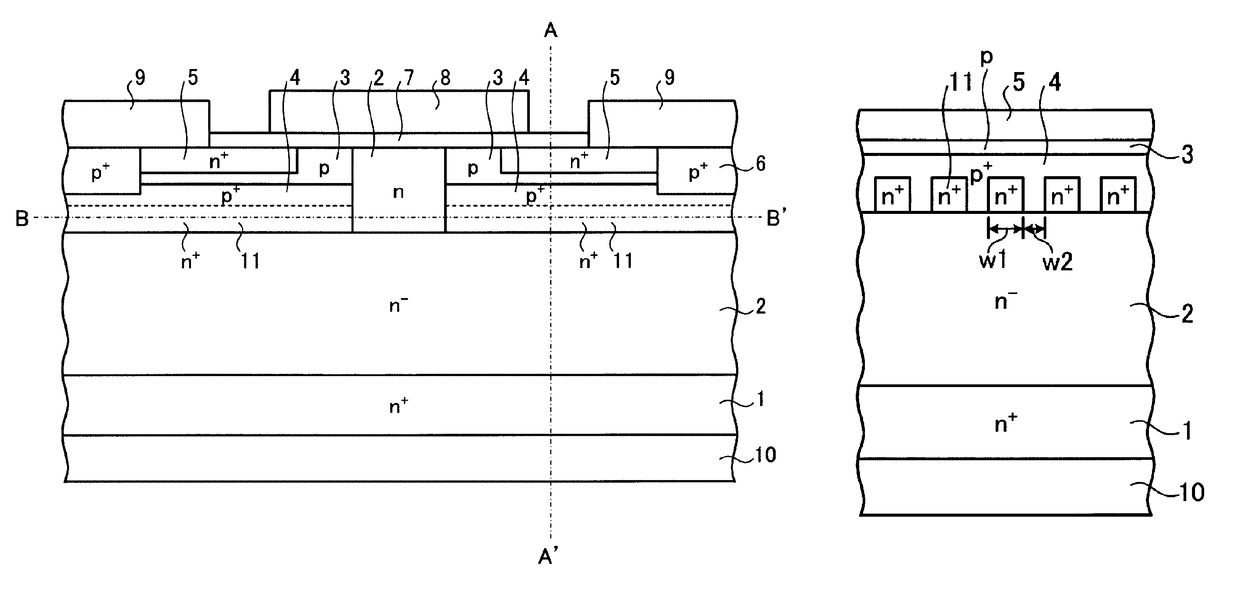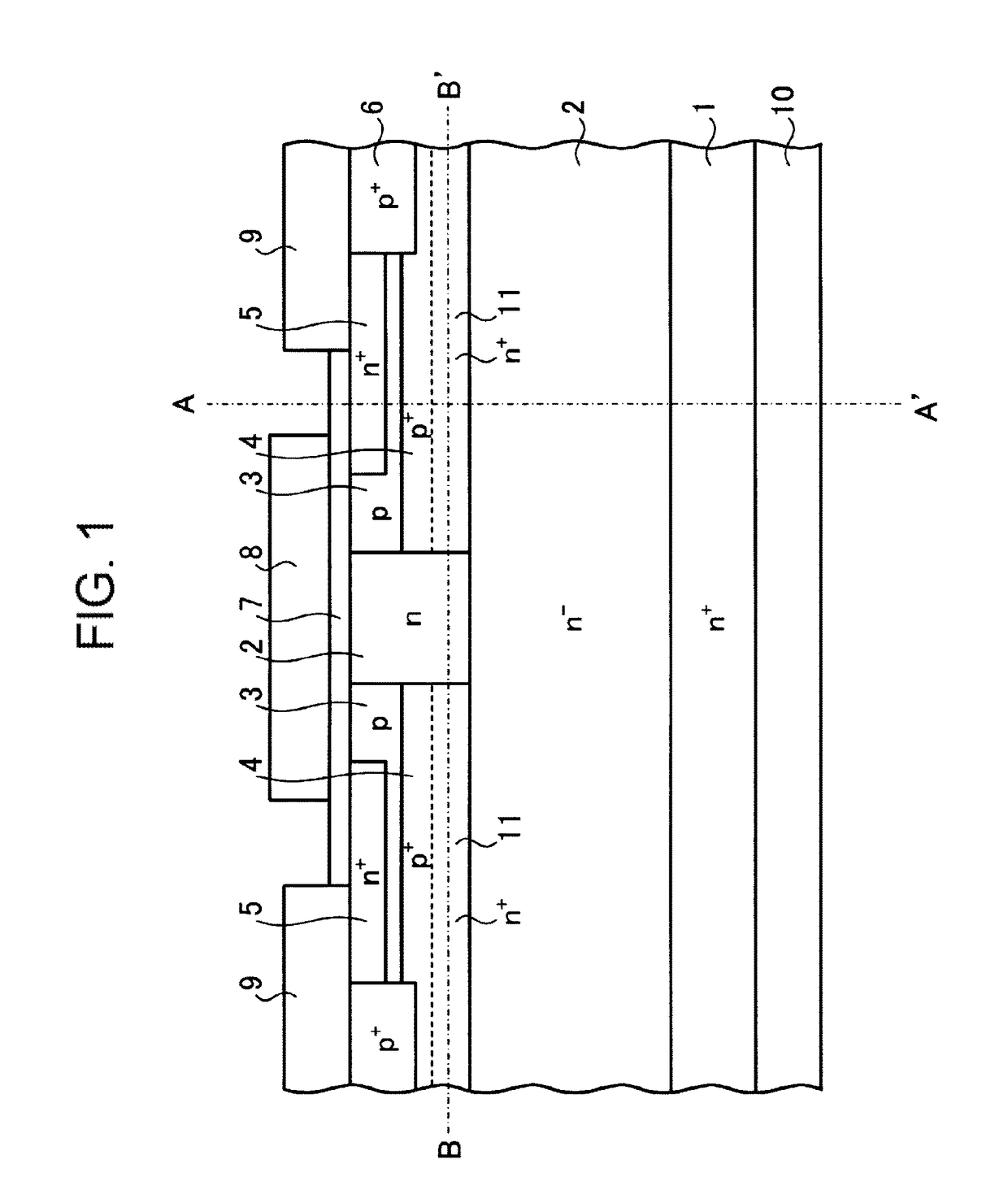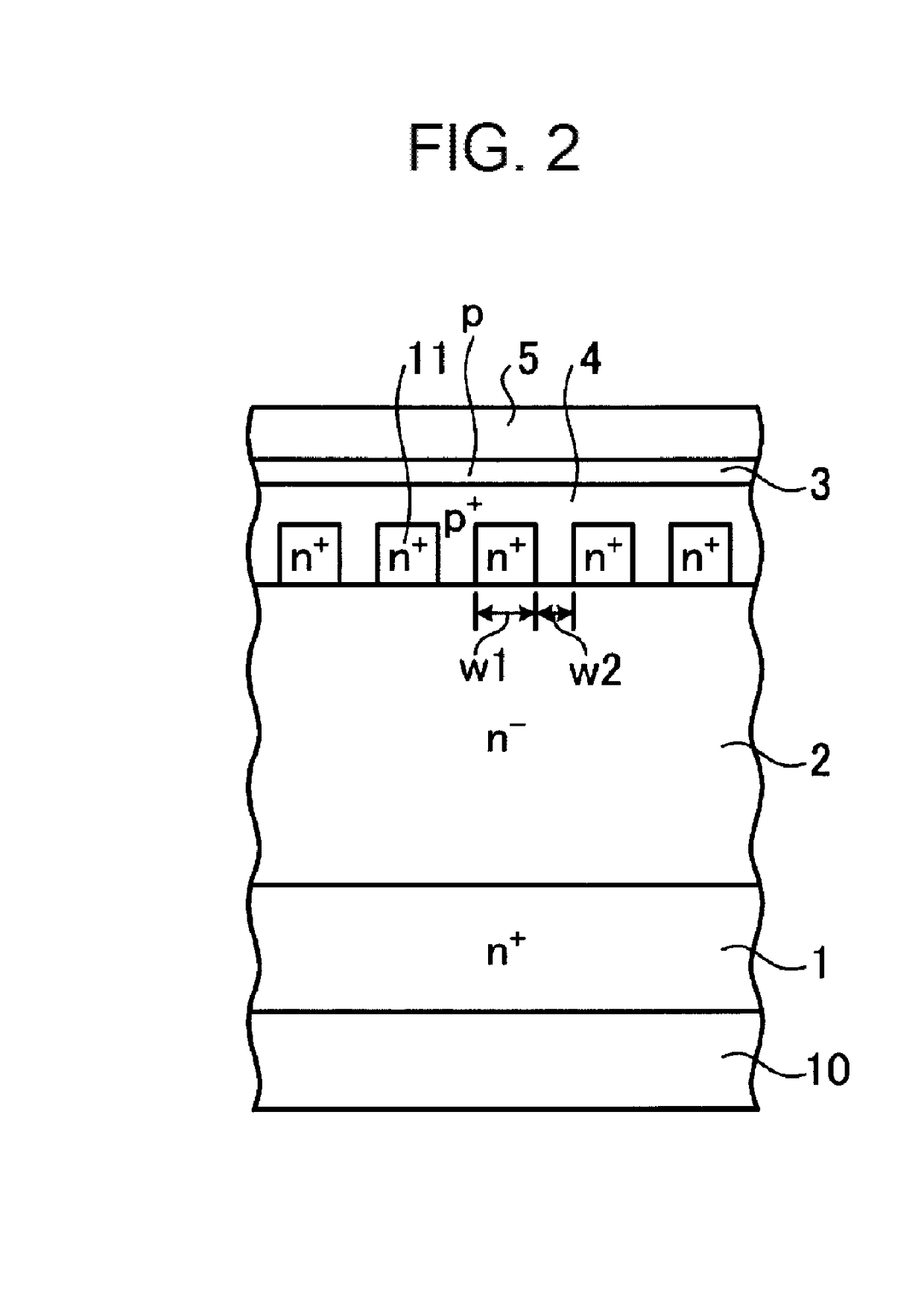Semiconductor device
a technology of semiconductors and semiconductors, applied in the direction of semiconductor devices, basic electric elements, electrical equipment, etc., can solve the problems of reducing breakdown voltage, oxide film breakage, and loss of features obtained by employing a wide band gap semiconductor, so as to prevent breakdown voltage from lowering, reduce the effective resistance of the first semiconductor region, and reduce the effect of on-state resistan
- Summary
- Abstract
- Description
- Claims
- Application Information
AI Technical Summary
Benefits of technology
Problems solved by technology
Method used
Image
Examples
first embodiment
[0046]A structure of a semiconductor device according to the first embodiment will be described. FIG. 1 is a sectional view illustrating a structure of a semiconductor device according to the first embodiment. FIG. 2 is a sectional view cut along the line A-A′ shown in FIG. 1. FIG. 3 is a plan view cut along the line B-B′ shown in FIG. 1. The semiconductor device according to the first embodiment shown in FIG. 1 is a wide band gap semiconductor device fabricated using a semiconductor material having a band gap wider than silicon (Si) such as silicon carbide (SiC), gallium nitride (GaN), or diamond (wide band gap semiconductor). FIG. 1 shows a cell structure of the wide band gap semiconductor device. FIG. 3 shows a situation that the cell structure shown in FIG. 1 is arranged in parallel.
[0047]In the wide band gap semiconductor device shown in FIGS. 1 to 3, an n− drift region (a first semiconductor region) 2 is disposed by epitaxial growth on the front surface of an n+ semiconductor ...
second embodiment
[0057]Next, a structure of a semiconductor device according to the second embodiment will be described. FIG. 5 is a plan view illustrating the structure of the semiconductor device according to the second embodiment. The semiconductor device according to the second embodiment is different from that according to the first embodiment in that there is disposed a high-concentration base region 24 having a hexagonal planar figure. In this case, a contact region (not shown) has the polygonal (for example hexagonal) planar figure, and the high-concentration base region 24 is disposed so as to surround the circumference of the end portion of the contact region located at the semiconductor substrate 1 side. An high-concentration region 21 is, for example, arranged by a stripe-shaped planar layout extending from the hexagonal center of the high-concentration base region 24 to each of the sides. A reference numeral 22a corresponds to the JFET region. A reference numeral 29a corresponds to the ...
third embodiment
[0059]Next, a structure of a semiconductor device according to the third embodiment will be described. FIG. 6 is a sectional view illustrating the structure of the semiconductor device according to the third embodiment. The semiconductor device according to the third embodiment is different from that according to the first embodiment in that the impurity concentration of an n+ high-concentration region 31 is set to be lower at the semiconductor substrate 1 side thereof than that at the p-channel region 3 side thereof. Concretely, the high-concentration region 31 is composed of a first high-concentration region 31a located at the p-channel region 3 side thereof and a second n high-concentration region 31b, whose concentration is lower than that of the first n+ high-concentration region 31a, located at the n+ semiconductor substrate 1 side thereof.
[0060]An impurity concentration distribution of the n+ high-concentration region 31 in the semiconductor device according to the third embo...
PUM
 Login to View More
Login to View More Abstract
Description
Claims
Application Information
 Login to View More
Login to View More - R&D
- Intellectual Property
- Life Sciences
- Materials
- Tech Scout
- Unparalleled Data Quality
- Higher Quality Content
- 60% Fewer Hallucinations
Browse by: Latest US Patents, China's latest patents, Technical Efficacy Thesaurus, Application Domain, Technology Topic, Popular Technical Reports.
© 2025 PatSnap. All rights reserved.Legal|Privacy policy|Modern Slavery Act Transparency Statement|Sitemap|About US| Contact US: help@patsnap.com



